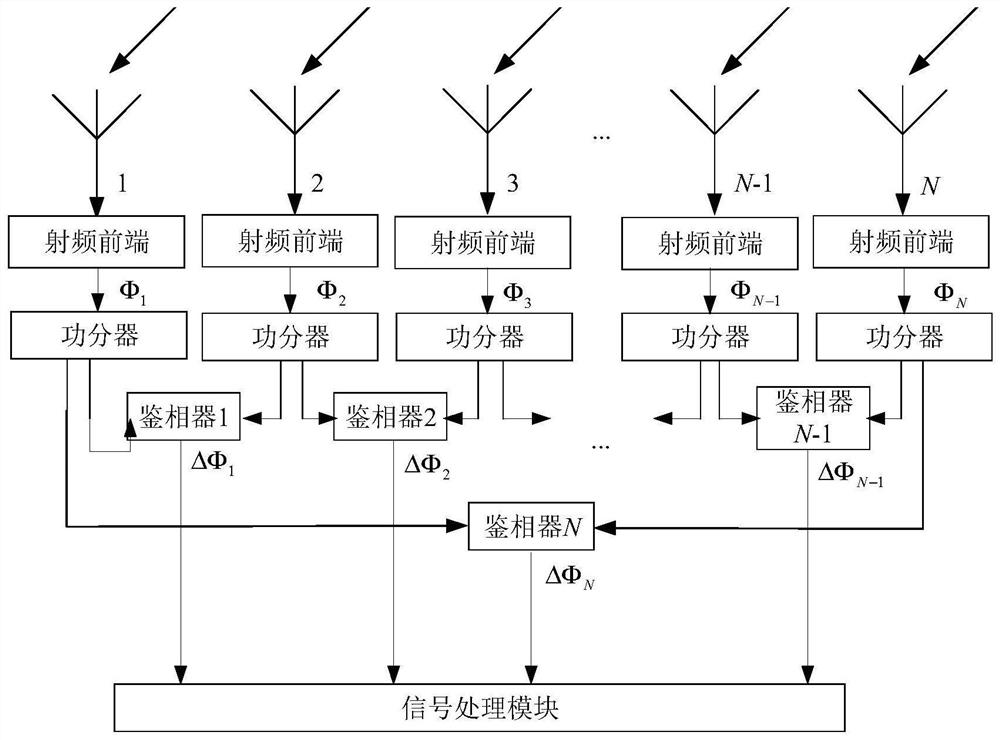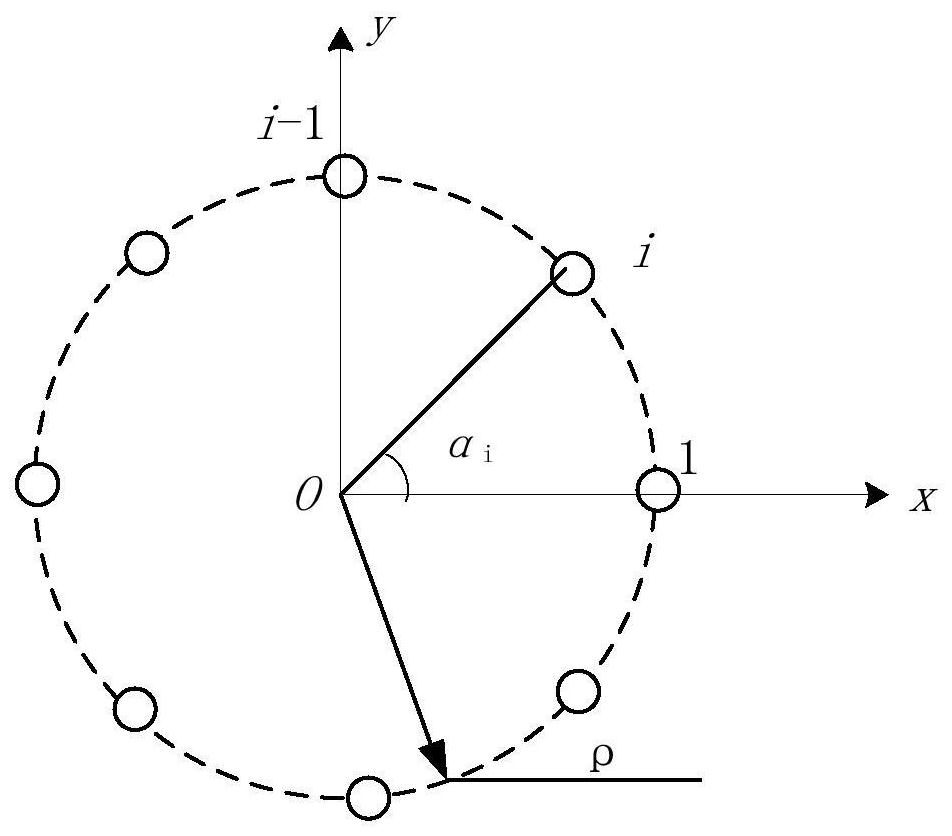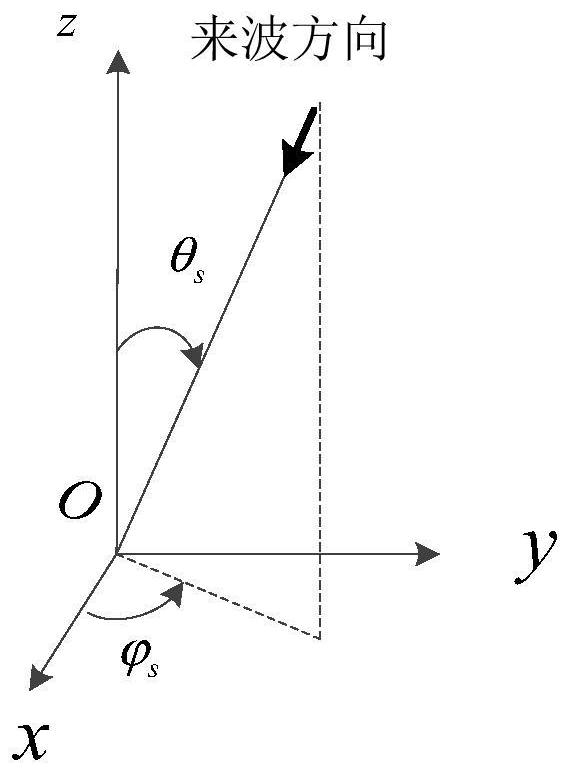Direction finding method and system based on radio frequency analog receiving system
A receiving system and radio frequency technology, applied in direction finders using radio waves, orientators for determining directions, radio wave measurement systems, etc., can solve the problem of unbalanced signal strength of input phase detectors, insufficient application of antennas, and insufficient accuracy Advanced problems, to avoid input signal amplitude imbalance, avoid logical judgment and other operations, and improve the effect of direction finding accuracy
- Summary
- Abstract
- Description
- Claims
- Application Information
AI Technical Summary
Benefits of technology
Problems solved by technology
Method used
Image
Examples
Embodiment Construction
[0059] The present invention will be further described below in conjunction with the accompanying drawings.
[0060] The present invention provides a two-dimensional incident angle measurement method with simple implementation and high precision, such as figure 1 The radio frequency analog receiving system shown, its main function is to convert space electromagnetic wave into phase difference. After the signal is received by the antenna, it is amplified and filtered by the RF front-end, and then enters into a power splitter. 1 ; The phase difference between the third antenna and the second antenna is recorded as ΔΦ 2 ; and so on until the Nth antenna and the N-1th antenna phase detection, record the phase difference as ΔΦ N-1 . Phase detection between the 1st antenna and the Nth antenna, record the phase difference as ΔΦ N . combine figure 1 The wiring relationship shown, the phase difference output is
[0061]
[0062] Φ i Indicates the voltage phase of the i-th anten
PUM
 Login to view more
Login to view more Abstract
Description
Claims
Application Information
 Login to view more
Login to view more - R&D Engineer
- R&D Manager
- IP Professional
- Industry Leading Data Capabilities
- Powerful AI technology
- Patent DNA Extraction
Browse by: Latest US Patents, China's latest patents, Technical Efficacy Thesaurus, Application Domain, Technology Topic.
© 2024 PatSnap. All rights reserved.Legal|Privacy policy|Modern Slavery Act Transparency Statement|Sitemap



